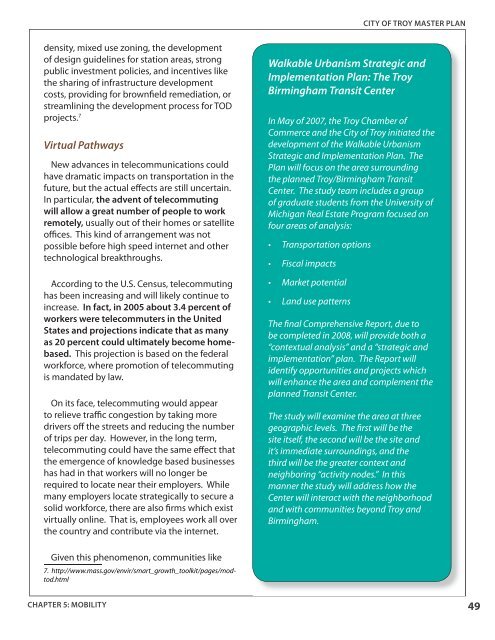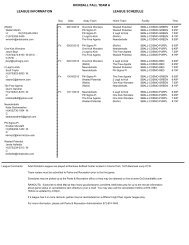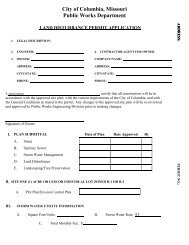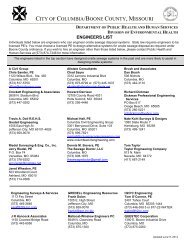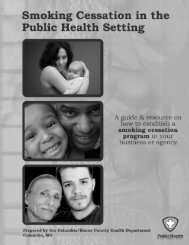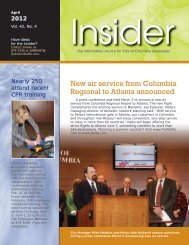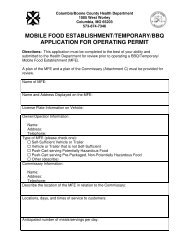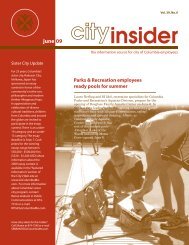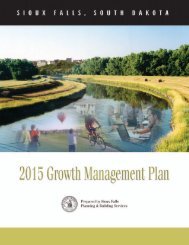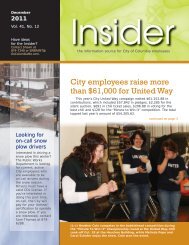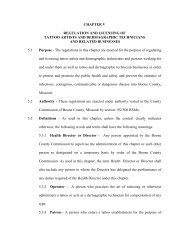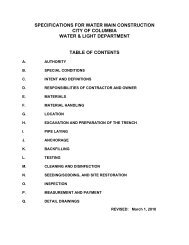Master Plan - City of Troy
Master Plan - City of Troy
Master Plan - City of Troy
You also want an ePaper? Increase the reach of your titles
YUMPU automatically turns print PDFs into web optimized ePapers that Google loves.
CITY OF TROY MASTER PLANdensity, mixed use zoning, the development<strong>of</strong> design guidelines for station areas, strongpublic investment policies, and incentives likethe sharing <strong>of</strong> infrastructure developmentcosts, providing for brownfield remediation, orstreamlining the development process for TODprojects. 7Virtual PathwaysNew advances in telecommunications couldhave dramatic impacts on transportation in thefuture, but the actual effects are still uncertain.In particular, the advent <strong>of</strong> telecommutingwill allow a great number <strong>of</strong> people to workremotely, usually out <strong>of</strong> their homes or satellite<strong>of</strong>fices. This kind <strong>of</strong> arrangement was notpossible before high speed internet and othertechnological breakthroughs.According to the U.S. Census, telecommutinghas been increasing and will likely continue toincrease. In fact, in 2005 about 3.4 percent <strong>of</strong>workers were telecommuters in the UnitedStates and projections indicate that as manyas 20 percent could ultimately become homebased.This projection is based on the federalworkforce, where promotion <strong>of</strong> telecommutingis mandated by law.On its face, telecommuting would appearto relieve traffic congestion by taking moredrivers <strong>of</strong>f the streets and reducing the number<strong>of</strong> trips per day. However, in the long term,telecommuting could have the same effect thatthe emergence <strong>of</strong> knowledge based businesseshas had in that workers will no longer berequired to locate near their employers. Whilemany employers locate strategically to secure asolid workforce, there are also firms which existvirtually online. That is, employees work all overthe country and contribute via the internet.Walkable Urbanism Strategic andImplementation <strong>Plan</strong>: The <strong>Troy</strong>Birmingham Transit CenterIn May <strong>of</strong> 2007, the <strong>Troy</strong> Chamber <strong>of</strong>Commerce and the <strong>City</strong> <strong>of</strong> <strong>Troy</strong> initiated thedevelopment <strong>of</strong> the Walkable UrbanismStrategic and Implementation <strong>Plan</strong>. The<strong>Plan</strong> will focus on the area surroundingthe planned <strong>Troy</strong>/Birmingham TransitCenter. The study team includes a group<strong>of</strong> graduate students from the University <strong>of</strong>Michigan Real Estate Program focused onfour areas <strong>of</strong> analysis:• Transportation options• Fiscal impacts• Market potential• Land use patternsThe final Comprehensive Report, due tobe completed in 2008, will provide both a“contextual analysis” and a “strategic andimplementation” plan. The Report willidentify opportunities and projects whichwill enhance the area and complement theplanned Transit Center.The study will examine the area at threegeographic levels. The first will be thesite itself, the second will be the site andit’s immediate surroundings, and thethird will be the greater context andneighboring “activity nodes.” In thismanner the study will address how theCenter will interact with the neighborhoodand with communities beyond <strong>Troy</strong> andBirmingham.Given this phenomenon, communities like7. http://www.mass.gov/envir/smart_growth_toolkit/pages/modtod.htmlCHAPTER 5: MOBILITY49


